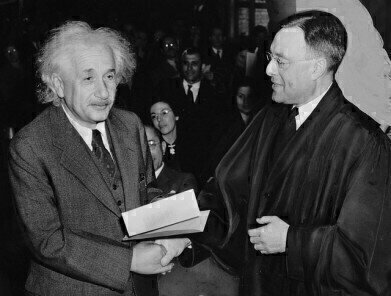Chromatography
Who Discovered Quantum Entanglement?
Nov 05 2022
Every year the Royal Swedish Academy of Sciences recognises excellence across six categories, including physics. This year, Alain Aspect, John Clauser and Anton Zeilinger were awarded the Nobel Prize in Physics 2022 for their contributions to the field of quantum entanglement. The trio carried out radical experiments with particles in entangled states and in the process, unlocked exciting new tools for quantum information science.
“Using groundbreaking experiments, Alain Aspect, John Clauser and Anton Zeilinger have demonstrated the potential to investigate and control particles that are in entangled states,” reads a statement published by the Royal Swedish Academy of Sciences. “What happens to one particle in an entangled pair determines what happens to the other, even if they are really too far apart to affect each other. The laureates’ development of experimental tools has laid the foundation for a new era of quantum technology.”
Einstein’s connection to quantum entanglement
Aspect, Clauser and Zeilinger may have been awarded the Nobel Prize in Physics 2022 for their quantum entanglement experiments. But they weren’t the first to explore the physical phenomenon. In the 1930s, Albert Einstein and his colleagues Nathan Rosen and Boris Podolsky published a paper describing quantum entanglement as “spooky action at a distance.” They couldn’t pinpoint the mechanics of quantum entanglement and instead attempted to explain it as a phenomenon powered by “hidden variables”.
Nonetheless, the concept of quantum entanglement was out there and eventually captured the attention of Irish physicist John Bell. In the 1960s Bell developed a method to test the hidden variables theory put forward by Einstein. He designed an equation called Bell’s inequality, which is 100% accurate when testing hidden variable theories but doesn’t explain quantum mechanics.
Nobel laureates step up
In the 2020s, Aspect, Clauser and Zeilinger built on the ideas put forward by Bell. Using entangled photons, they tested the Bell’s inequality and ruled out the hidden variable theory. In an interview with the Chief Scientific Officer of Nobel Prize Outreach, Aspect was quick to credit predecessors like Einstein and Bell. He says the award “comes as part of a great lineage of prizes in quantum mechanics” and credits German theoretical physicist Werner Karl Heisenberg for his pioneering work in quantum mechanics in the 1930s.
“Of course I am very impressed because I’m certainly not at the same level as these people who have really totally changed the physics. But then I am proud to be of the same league of course,” says Aspect. “In a sense my experiment was trying to find a limit of quantum mechanics, and we didn’t find it.”
Pushing the limits of science
From quantum entanglement to multimodal chromatography, scientists are continually pushing the limits with exciting new tools and technologies. Find out more about the cutting-edge techniques being used to purify proteins and other biological molecules in ‘Optimising Viral Vector Purification Strategies with Multimodal Chromatography’.
Digital Edition
ILM 49.5 July
July 2024
Chromatography Articles - Understanding PFAS: Analysis and Implications Mass Spectrometry & Spectroscopy Articles - MS detection of Alzheimer’s blood-based biomarkers LIMS - Essent...
View all digital editions
Events
Jul 28 2024 San Diego, CA USA
Jul 30 2024 Jakarta, Indonesia
Jul 31 2024 Chengdu, China
ACS National Meeting - Fall 2024
Aug 18 2024 Denver, CO, USA
Aug 25 2024 Copenhagen, Denmark




24_06.jpg)













